Upgrade for urban spaces
Whether it’s a smart water supply, intelligent building control or autonomous public transport: the integration of modern technologies in urban spaces is opening up new possibilities for sustainable and efficient urban development. Potting compounds, adhesives and sealants that contribute to the functionality and durability of the required electronic components play an often invisible, yet crucial role when it comes to progress.
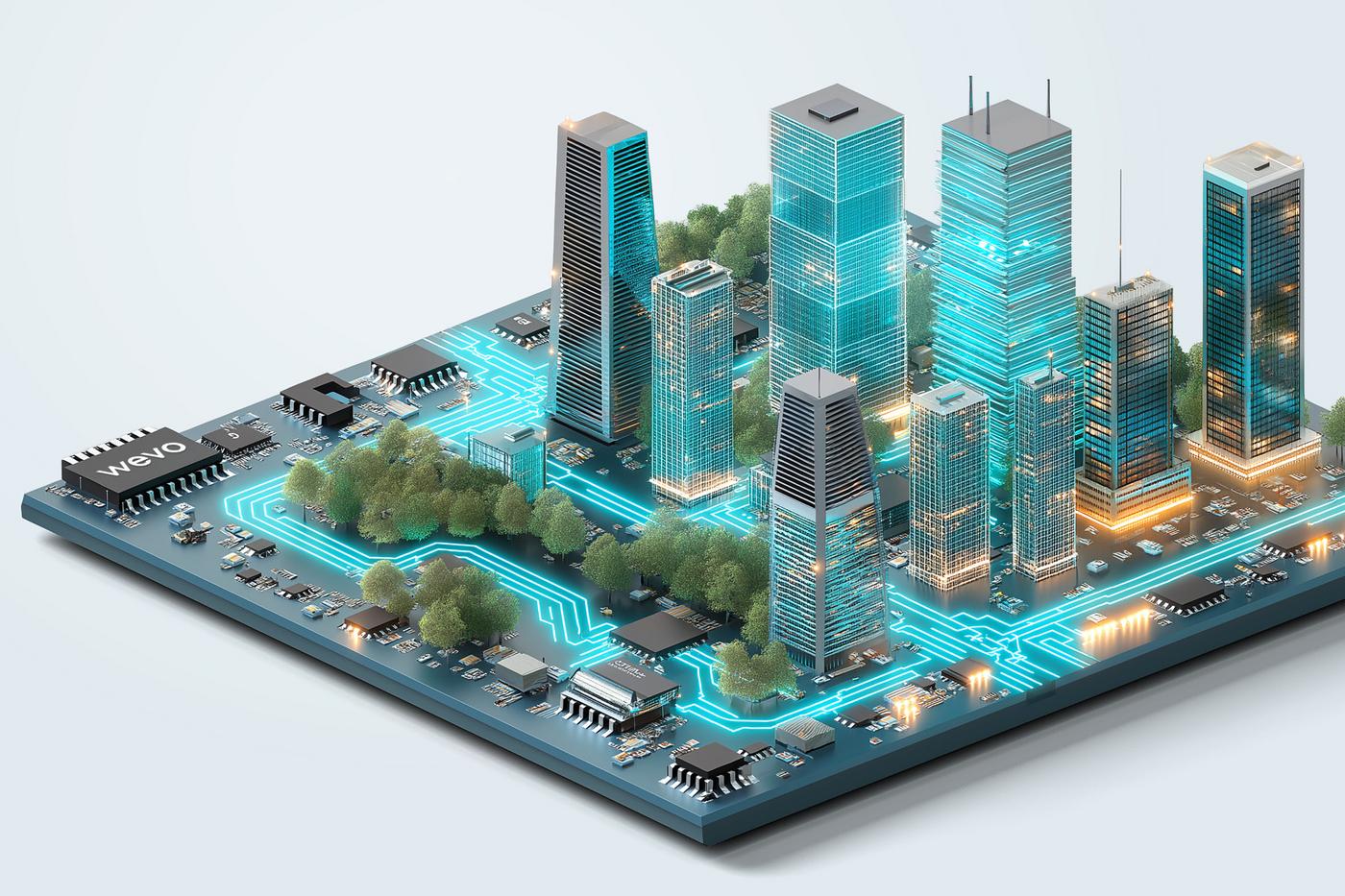
Many cities around the world are facing enormous change: according to the United Nations, by 2030 there will be 5.2 billion people living in cities – around 60 per cent of the global population. As a result, there is a growing need for greater efficiency and climate change adaptation in order to ensure that urban centres remain liveable in the long term. The required transformation of the infrastructure poses an immense challenge for urban planners, architects and governments. Technology is playing a key role here. There are already a number of projects providing innovative solutions through the integration of modern electrical and electronic components, in areas such as water management, mobility and transport, energy and lighting. Smart sensors and IoT applications are opening up new possibilities for the automation of buildings. This article explores the current state of development and the technological potential.
“Instead of blaming cities for the problem, I think the opposite is true: that cities, the urban structure, can provide the solution for many of the problems and challenges our society is currently facing,” explains the Mayor of Barcelona, Jaume Collboni, during a speech on the modernisation of the metropolis. More than 10.6 billion euros have been provided for public investment into this transformation as part of the initiative “Barcelona 2035”. Parameters such as air quality, noise level, water consumption and the utilisation of walkways and bicycle paths are already being assessed and optimised in real-time using state-of-the-art technology.
Anthony Townsend, internationally recognised expert on the future of cities and urban technology at New York’s Cornell University, sees great potential in the use of modern technology when it comes to urban planning: “Technology can help you build whatever kind of city you want.” And, he continues: “That’s what excites me – ferreting out how the details of deploying sophisticated new technologies play out in the varied geography of cities. The sheer complexity of the interactions there means there are almost limitless possibilities.”
The demand for innovative technologies is high. Analysts at Guidehouse Insights forecast that the smart city market will reach a revenue of 301 billion US dollars by 2032, with an annual growth rate of 10.7 per cent. Major tech and IT providers such as Siemens and Cisco have positioned themselves accordingly, offering solutions across a wide range of sectors.

These technologies are based on highly sensitive electronics such as chips, sensors and cameras, which are becoming increasingly powerful and complex. Wevo is providing the required materials: two-component potting compounds, adhesives and sealants based on polyurethane, epoxy and silicone offer targeted protection against particulate matter, weather conditions or tampering, efficiently dissipate heat and at the same time ensure the transmissibility for radio waves that is often critical for these components.
Comprehensive planning
The right planning is crucial, as Townsend explains in an interview with Huawei: “You should know what you want before you start picking the technologies.” A key part of this process is carefully aligning solutions with local and cultural conditions. In the United States, for example, the focus is often on improving mobility in sprawling cities that are heavily dependent on cars. Europe faces the challenge of transforming its historically grown urban centres without compromising their character. In Asian megacities such as Shanghai or Singapore, the priority is managing population pressure through the use of intelligent technologies.
Networks, initiatives and research institutes in cities around the world are driving the advancement of cities. Organisations such as the World Smart Sustainable Cities Organization (WeGO) connect cities and companies to promote digital and sustainable solutions. In Germany, the Morgenstadt Initiative, a network comprising the Fraunhofer Institutes, municipalities and companies, is researching innovative concepts for climate-resilient and technologically connected urban spaces.
The decision as to which technical applications make the most sense is increasingly being made based on data. Germany’s Federal Agency for Cartography and Geodesy (BKG), for example, is working on a digital twin, the foundation of which is provided by Lidar systems – laser-based distance measurement devices – mounted on aircraft: “Our aim is to create a twin for the entire country, which will allow us to analyse as many interdisciplinary processes as possible and to simulate them where necessary,” explained BKG President Prof. Paul Becker at a press conference in November 2023. This will allow cities, for example, to identify heat zones or areas at risk of flooding.
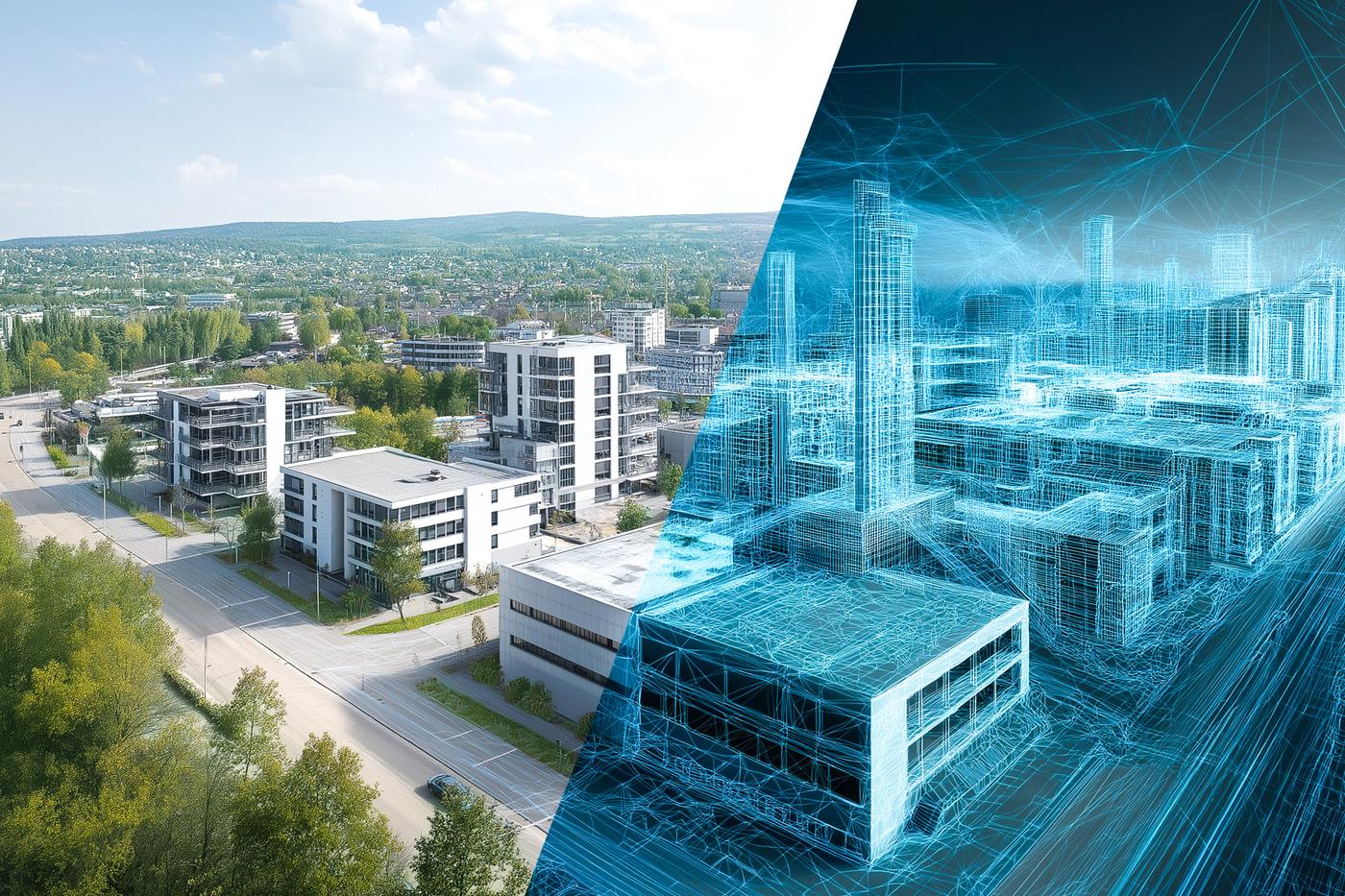
The “15-minute city” is one of the pioneering concepts in urban planning. It aims to have all the key amenities required on a daily basis within a 15-minute walking distance. A team of researchers led by Carlo Ratti and Paolo Santi from the Senseable City Lab at the Massachusetts Institute of Technology (MIT) has investigated to what extent this ideal is already reality in the US. During this project, around 40 million mobile devices, as well as 5.3 million points of interest in over 100 US cities, were analysed as part of a study called “The 15-Minute City Quantified Using Human Mobility Data”. The findings demonstrated that a median of only around 12 per cent of everyday journeys are taking place within the 15-minute radius. Targeted urban planning measures for the improvement of local accessibility could therefore have a positive effect on traffic volume, energy consumption and quality of life, concluded the scientists.
Case 01: AS+P
Rethinking urban planning
Smart technologies, liveable neighbourhoods, interdisciplinary cooperation – international planning office AS+P provides insights into modern urban design.
Traffic
A smart traffic management system, combining sensors and cameras with mobile and GPS data, handles a variety of tasks – from monitoring, counting and directing inner-city traffic to managing parking and integrating public transport with new mobility options. One example is Los Angeles with its highly sophisticated signal system. According to the city, more than 40,000 induction loops collect traffic data at around 4,500 connected intersections and dynamically adjust the traffic light phases. The result: a 10 per cent time saving.
The hardware for this comes from manufacturers such as Yunex Traffic. The former Siemens subsidiary is now part of the Italian holding company Mundys and develops intelligent traffic systems while optimising traffic flows worldwide. In London, its browser-based cloud solution enables adaptive real-time control of 5,500 traffic signals. This system will bring about a significant transformation, confirms Carl Eddleston, Director of Network Management and Resilience at Transport for London, in a statement to Yunex. “This world-leading new traffic management system will be a game-changer for us in London. It will use new data sources to better manage our road network, tackle congestion, reduce delay for people choosing healthier travel options and improve air quality.”
Numerous concepts are currently emerging in science and industry to support the transition to multimodal transport systems, where different modes of transport are flexibly combined. One example is the KIRA project (“AI-based regular operation of autonomous on-demand traffic”) from Deutsche Bahn (DB) and the Rhein-Main-Verkehrsverbund (RMV) transport association. Since summer 2025, autonomous on-demand vehicles with Level 4 automation have been operated on public roads for the first time in Germany, as reported in a press release from DB.
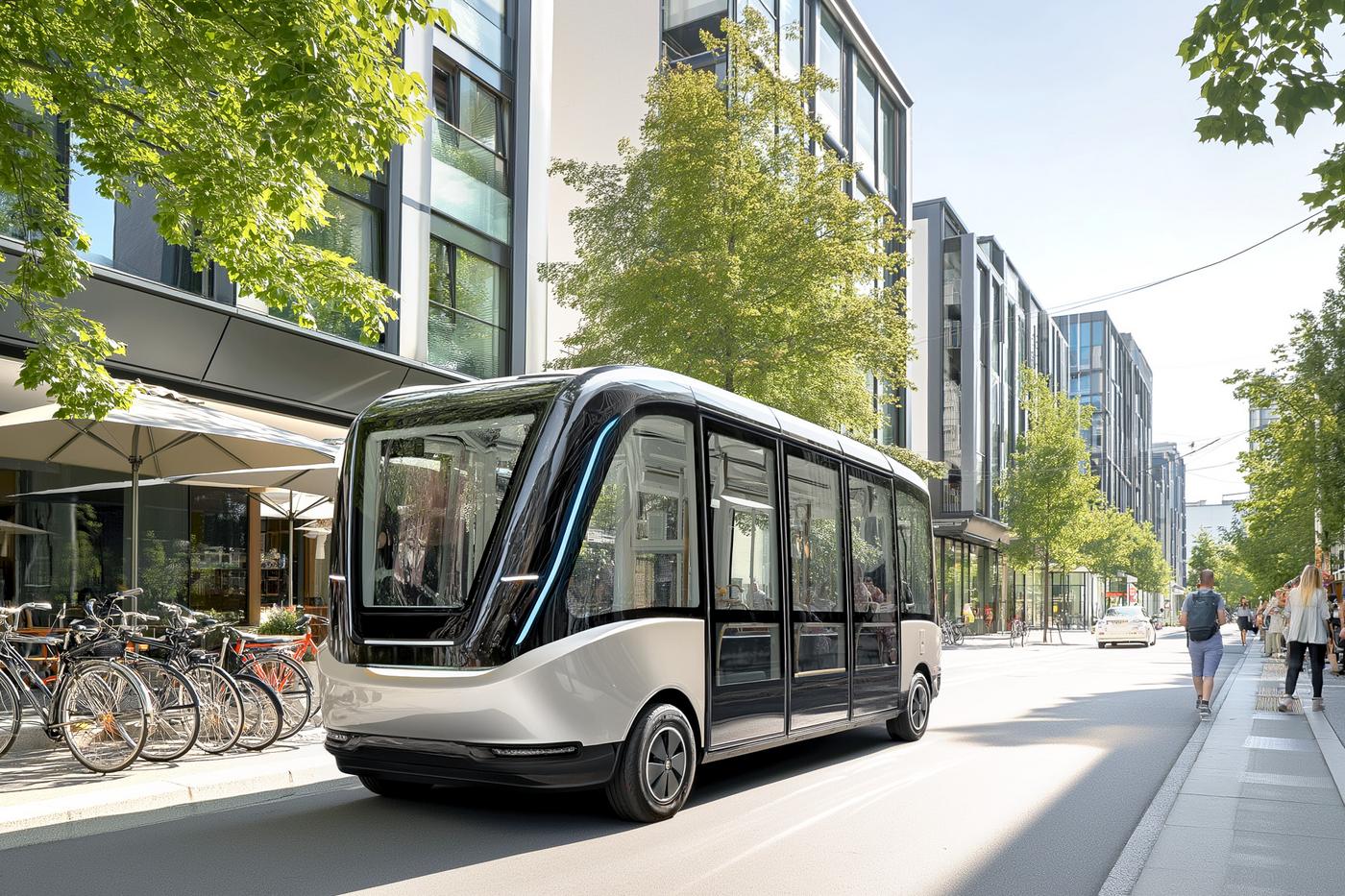
When it comes to city logistics, so-called Weigh-in-Motion systems (WIM) represent another technological development – one leading manufacturer being the Swiss-based Kistler Group. According to the company, the sensors are embedded into the road surface. Equal to the size of one contact lens, they comprise up to 50 disc-shaped quartz crystals. Thanks to their wide measurement range, they are able to register weight and axle loads in moving traffic. In New York City, a WIM system helps protect heavily frequented bridges.
The interdisciplinary research project REALIST (Real-World Laboratory for the accelerated electrification of urban logistics transport in Stuttgart) from the University of Stuttgart is testing the use of electric trucks. Together with logistics service providers, a scalable concept for the electrification of urban delivery traffic is to be developed on the basis of operating, charging and network data.
The electronic components required for these systems are being potted, bonded or sealed with Wevo material systems. The polyurethanes, epoxy resins and silicones also ensure efficient production processes, for example for partial or full automated series production.
Lighting
Urban lighting enhances safety, regulates movement flows and shapes the atmosphere of public spaces. It is increasingly becoming part of intelligent infrastructure. “A large proportion of LED luminaires installed in cities are interconnected with each other, primarily via GSM, the mobile network,” explained Andreas Rindt, manager at the Dutch lighting specialist Signify, in a Frankfurter Allgemeine podcast. According to the company, it is one of the global market leaders and registered the highest number of patents of any lighting manufacturer with the European Patent Office (EPO) in 2024.
One example of such innovation is adaptive lighting control, which today goes far beyond simple brightness adjustments. Modern systems combine motion and environmental sensors or can be equipped with displays for interactive city tours. These extended functions are made possible by technological advances such as miniaturised sensors, combined modules and real-time data integration.
In all these technologies, customised two-component materials from Wevo are used to ensure the reliable integration of essential electronic components – whether communication modules, antennas or sensors. At the same time, the potting compounds, adhesives and sealants provide long-lasting protection, tailored to component- and process-specific requirements.
Buildings
“In my opinion, architectural design and building technology planning – if the concept of smart building is taken seriously – can no longer be considered separately,” says Marco Verardi, Head of Data & Optimisation Services Deutschland at Siemens, in an interview with real estate portal Skyline Atlas. However, the subsequent modernisation of building technology is possible – and worthwhile: according to estimates from Siemens, “96 per cent of today’s buildings are expected to remain in operation until 2050.”
For reliable monitoring of water, heating and electricity consumption, smart meters are increasingly being used. Tailor-made Wevo potting compounds based on polyurethane enable precise measurements over the long term and ensure uninterrupted signal transmission, while also providing effective protection against tampering.
One building that continues to serve as an international reference project for smart buildings more than ten years after its opening is “The Edge Amsterdam”. This office building located in the south of the Dutch capital uses geothermal energy for heating and cooling, while a rooftop photovoltaic system generates electricity. Heating, lighting and space utilisation are efficiently managed with 28,000 interconnected sensors. Thanks to open interfaces, modular systems and continuous data analysis, The Edge remains upgradeable and state-of-the-art.
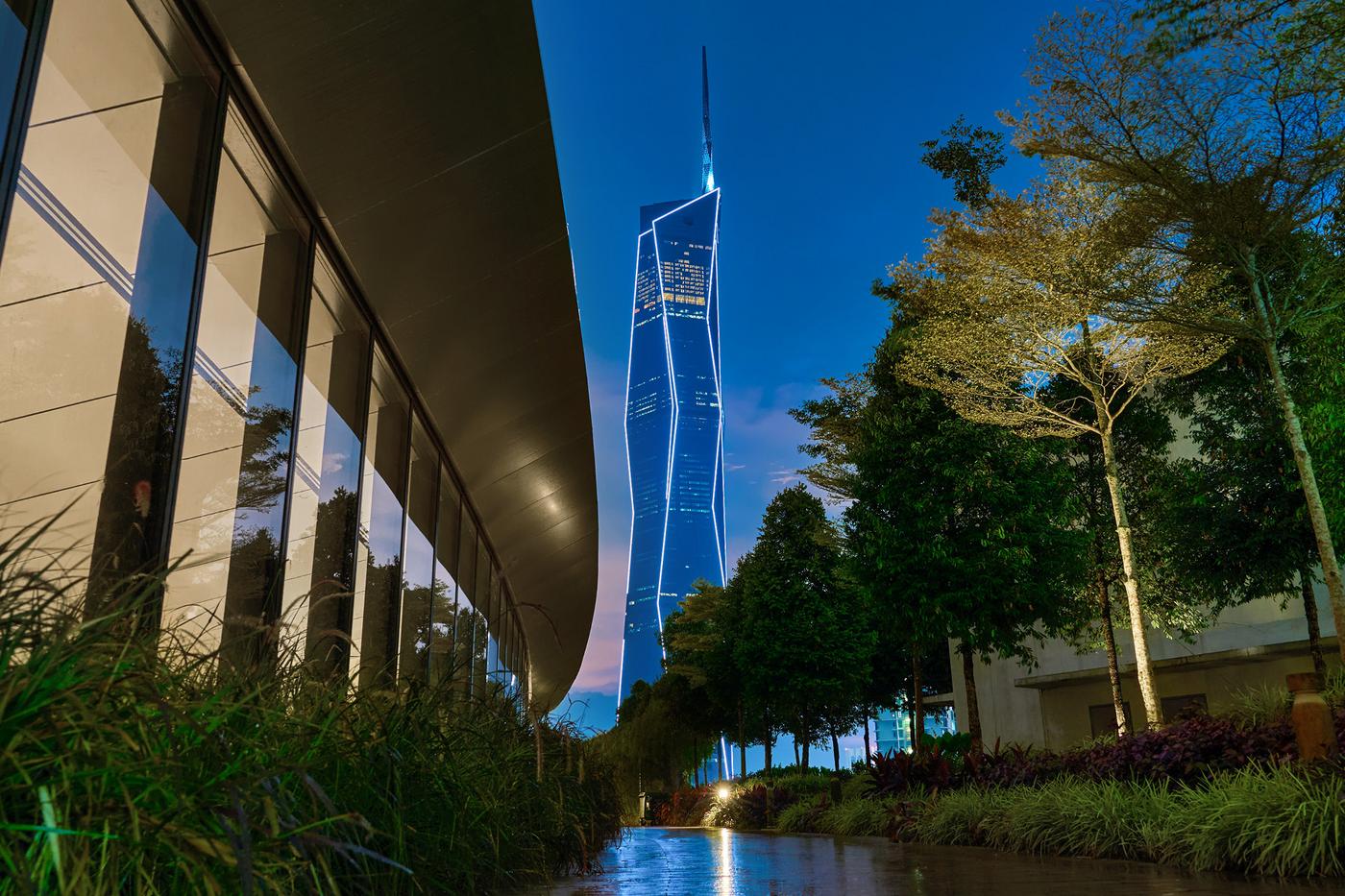
The security systems and preventive maintenance efforts in smart buildings are often centrally and automatically managed in order to ensure smooth operation and reduce maintenance costs. The MERDEKA 118 skyscraper in Kuala Lumpur, which opened at the start of 2024, is no exception here: according to Theben AG, a provider of building automation technologies, lighting, blinds and timed functions in offices, staircases and catering areas are controlled via more than 5,800 devices supplied by the company. At 678.9 metres, MERDEKA 118 is the highest building in south-east Asia and the second-highest in the world.
Case 02: cube berlin
Smart office building with innovative technology
The combination of architecture, artificial intelligence and innovative technology makes the cube berlin a representative example of how office buildings can be completely reimagined.
Water
In addition to drought and aridity, heavy rainfall and the resulting floods are presenting cities with a challenge. One solution is the concept of the sponge city. Permeable surfaces, retention and infiltration basins, green spaces, green roofs, rainwater storage and retention structures, as well as innovative sensor and control systems connected to meteorological data, enable optimised water management. In Germany, for example, the Schumacher Quartier in Berlin, with more than 5,000 planned apartments, is being developed as a sponge city.

For such concepts, technology companies like the US-based Xylem Inc. provide pumps, ventilation and treatment systems, measurement, analysis and automation technology, as well as digital platforms for remote monitoring and control of complex networks. The electronic components used in these systems can be individually protected with Wevo potting compounds, adhesives and sealants – from digital water shafts to flow sensors.
The widespread use of intelligent sensor networks in German cities is illustrated by the Smart City Index 2024 of the German Federal Association for Information Technology, Telecommunications and New Media (Bitkom): 95 per cent of cities deploy sensors to collect environmental data, such as air quality (88 per cent) and soil moisture (59 per cent), or to forecast environmental events such as floods or heavy rainfall (57 per cent).
An innovative approach for predicting storm surges and even volcanic eruptions is being pursued by the Fraunhofer Institute for Integrated Circuits IIS and the Max Planck Institute for Dynamics and Self-Organisation (MPI-DS). The researchers are developing miniaturised measurement balloons with integrated radio technology, capable of capturing environmental data at a spatial resolution previously unattainable.
Timely flood warnings combined with appropriate protective measures are also critical for coastal cities. In Rotterdam, the Maeslant barrier, one of the largest movable storm surge barriers in the world, uses an automated computer system to protect against flooding: the massive gates close automatically when a surge is imminent. Venice also employs an automated barrier system, MO.S.E (“Modulo Sperimentale Elettromeccanico” – electromechanical test module). according to an article in the International Journal of Engineering Research & Technology, the 78 floating gates are up to 20 metres high, 29 metres wide and can be filled with compressed air or water to raise or lower them.
Energy
The basis for this urban transformation lies in the energy systems. In its Global Energy Perspective 2024, management consultancy McKinsey forecasts a rise in global energy demand of 11 to 18 per cent by 2050, particularly in emerging markets.
The Distribution Grid Study II by the German Energy Agency (dena) identifies digitalisation as one of four key areas for the success of the energy transition. Smart grids for intelligent energy distribution are essential here. Energy company EnBW is convinced of their strategic importance. In 2024, it acquired enersis, a leading provider of digital twins in the energy sector, according to a press release. This data can be used for integrated simulation and planning, for example in the expansion of new solar or wind power facilities.
Wevo material systems ensure secure and durable live components, from PV inverters to current sensors. Special two-component silicone potting compounds provide versatile, tailored solutions that enable both reliable operation and efficient production processes for photovoltaic electronics.
Heating and cooling supply systems are also evolving continuously, reaching new efficiency and sustainability standards. In Hamburg, industrial waste heat from the Aurubis copper smelter is fed into the city’s district heating network, providing climate-neutral energy for around 20,000 households. In Paris, the existing pipeline system in the sewers is being expanded: via central units, cool water from the Seine is channelled to 800 connected buildings, where heat exchangers feed the cold into air-conditioning systems. This network is planned to be extended to 2,200 buildings in the future.
Case 03: Siemens
Technology as an enabler
With its flagship project in Berlin, Siemens demonstrates how modern technology can create new opportunities for the planning, construction and operation of a city district.
Technology for the urban future
The examples provided show that the technological transformation of urban areas is in full swing – from mobility and energy to lighting and smart buildings, as well as water and resource management. Interconnected systems provide the foundation for more efficient, liveable and climate-neutral cities. “All the necessary technologies are already known,” explains Ursula Eicker, Professor at Concordia University in Montreal and Director of the Next-Generation Cities Institute. The key is to deploy them in a targeted and sustainable way. “Next-generation cities will be built according to a lifecycle approach, in which resource use follows the principles of a circular economy.”
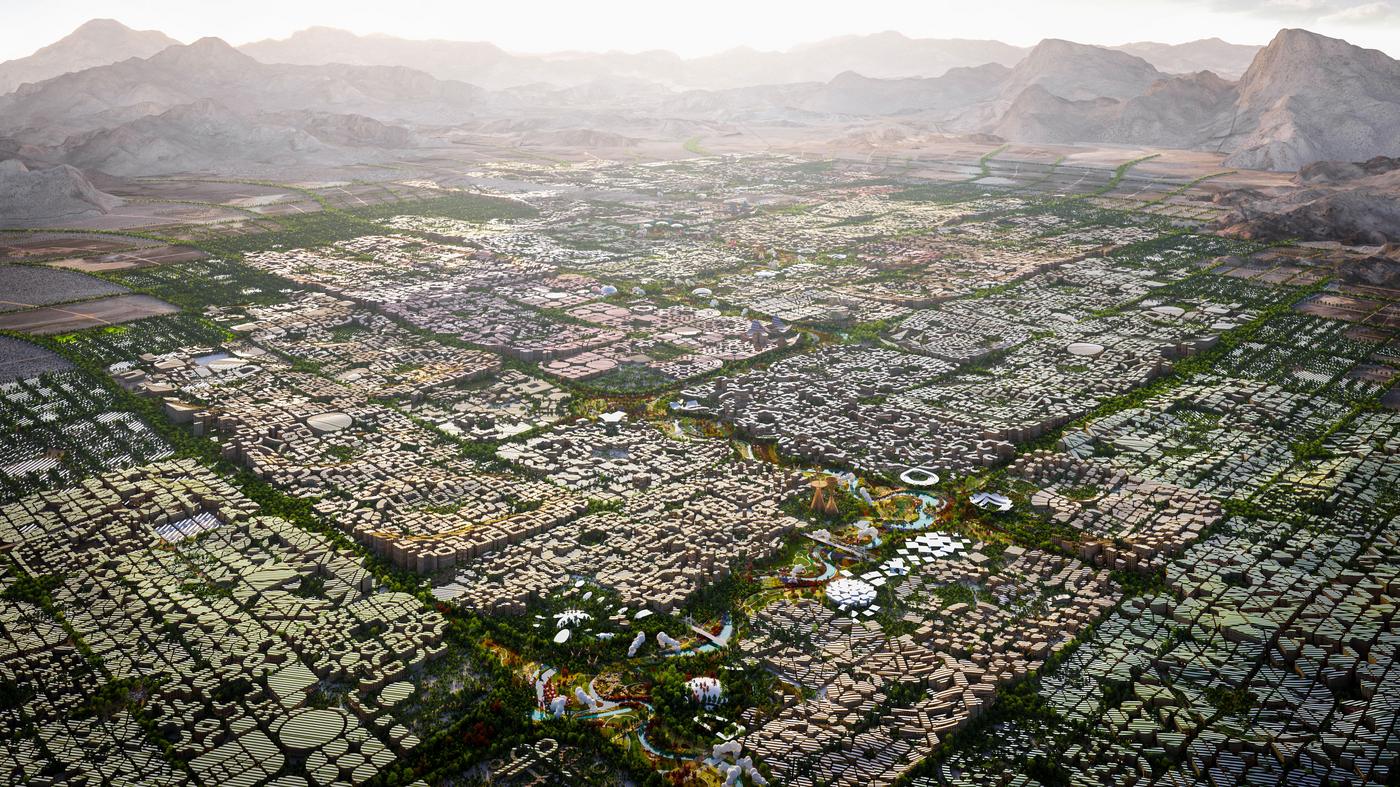
Telosa, a model city initiated by billionaire Marc Lore in the US desert, demonstrates technologically visionary urban development. The concept, designed by the internationally renowned architecture and design firm BIG (Bjarke Ingels Group), relies on the full integration of digital systems into infrastructure, energy supply, mobility and building technology. The goal is to create a largely self-sufficient and energy efficient city through data-driven control and decentralised energy networks, while social inclusion and equitable resource use complement the project’s technological ambition.
Already under construction is Wanxiang Innova City in Hangzhou, China – a smart-city project based on a master plan by the US-based SmithGroup. The city is planned to accommodate around 250,000 residents and aims to integrate infrastructure, electric mobility and intelligent energy management. This relies on the interconnection of data platforms, sensors and energy management with architectural design, creating a highly networked city in which all technical systems are coordinated and digitally monitored.
For such complex planning to function reliably, more than software and control technology is required. Precision is also needed at the material level: Wevo’s potting compounds, adhesives and sealants ensure the performance of the electronic components used in smart infrastructure, sensors and control units. The future of cities will therefore not be determined solely by planning visions or societal concepts, but equally by the capabilities of the technology deployed, which forms the backbone of urban intelligence.
Interview:
“Technology helps our cities sense the needs of their inhabitants”
In an interview with SCIO, Professor Carlo Ratti, renowned Italian architect and founder of the Senseable City Lab at MIT (Massachusetts Institute of Technology) in Boston, explains how technology can be used to make cities more sustainable.
Image sources: jamesteohart (stock.adobe.com); Telosa Community Foundation
Links related to this article
Studies:
The 15-minute City Quantified Using Human Mobility Data
Los Angeles' Automated Traffic Surveillance and Control System Reduced Travel Time by Ten Percent Using 40,000 Loop Detectors Across 4,500 Connected Intersections with Automated Signal Control
Experimental Electromechanical Module (MOSE) for Flood Control in Venice
Companies, research institutes and institutions:
World Economic Forum
Fraunhofer-Gesellschaft / Morgenstadt Initiative
Federal Agency for Cartography and Geodesy
Yunex Traffic
Deutsche Bahn
Kistler
Signify
Siemens
PLP Architecture
Theben
Fraunhofer-Institut für Integrierte Schaltungen IIS
McKinsey
Telosa
Smith Group
Disclaimer (Extract) – Copyright and IP Rights: The contents published on this website are subject to German copyright and ancillary copyright law. Any utilization not permitted by German copyright and ancillary copyright law requires the prior written permission by the provider or the respective owner. This applies in particular to the copying, working, translation, storage, processing and reproduction of contents in databases and other electronic media and systems. Third-party contents and rights are identified as such in this regard. The unauthorised duplication and forwarding of individual contents or complete pages is not permitted and may possibly be punishable as a criminal offence. Only the creation of copies and downloads for personal and private and non-commercial use is permitted. The use of this website as external link shall only be permitted upon prior written approval oft he provider. Each and any firm or trademark is sole property of the relevant company. Citations of trademarks and names of third parties have a purely informative character. You will find the complete disclaimer in the imprint.